
|   |

|   |
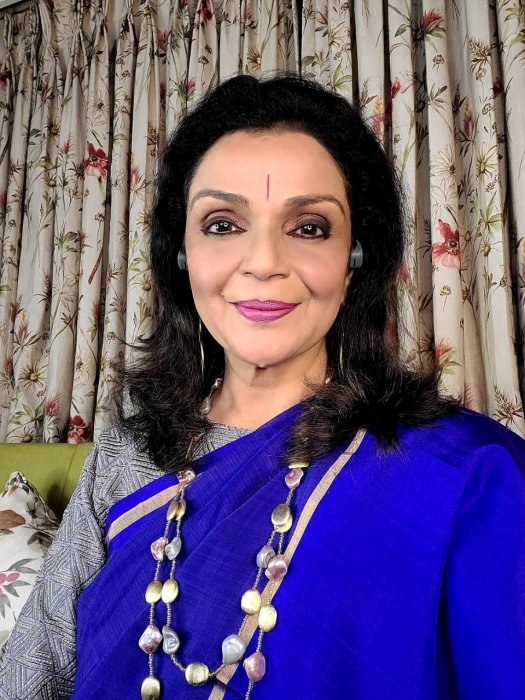 June 2021 POIGNANCY The silence, was broken by a sob In the darkness, a shadow trembled The air was damp, with unshed tears... ...and had a strange smell of sorrow The melancholic gloom..of a broken spirit, a bruised heart.. dying a slow death...in deafening desolation! - Romi Mittal As the list of beloved and admired artistes being felled by the virulent India-B 16:17 variant increases almost daily, all of India is in intense lockdown mode. The rest of the world seems to be slowly unfurling into a quieter and more cautious movement towards "normalcy". The gates of homes are open, sidewalks are spilling over with friends finally meeting over coffee and endless chatter, and yes, artistes are prepping for some outdoor events this summer. But not in India, as we seem to be facing a never ending stretch of dreary monotony. In this edition, however, I have chosen to focus on the 8 digital dance premieres that have made us all smile. Even if it is short lived. #SOLITUDE AND SOUL SEARCHING Six months ago, Toronto based dance pioneer Lata Pada commissioned four of India's leading dance lights to create 30 to 40 minute solos based on their own ruminations and reflections about their art. ANVESANA was the result of that prompt which was beautifully delivered on the SHAALE platform.  Biyajini Satpathy All eyes were tuned to the stunning form of Biyajini Satpathy, launching her second career as a soloist after 25 years at Nrityagram. So used are her fans to the daily rehearsal Instagram postings, that I actually saw some of her studio movements in the final work that she titled CALL OF THE DAWN. Weaving compositions into a single morning raga AHIR BHAIRAV (explored beautifully by Bindhumalini Narayanaswamy), Bijayini has become a dancer whose liquid strength radiates the confidence of a woman and an artiste whose body is humming its own tune. Movements were beyond Odissi, the slow stretches, the extended arms and elongated legs lifted in heart stopping balances - these could be movements for any of the Indian classical dance forms. The steady camerawork focused on long shots and medium shots rather than close ups (which I missed) and the single large "uruli" reflected the mood lighting that was reminiscent of the morning sun whose glowing arc peeps above the night horizon. In all, a stunning opening for the festival. 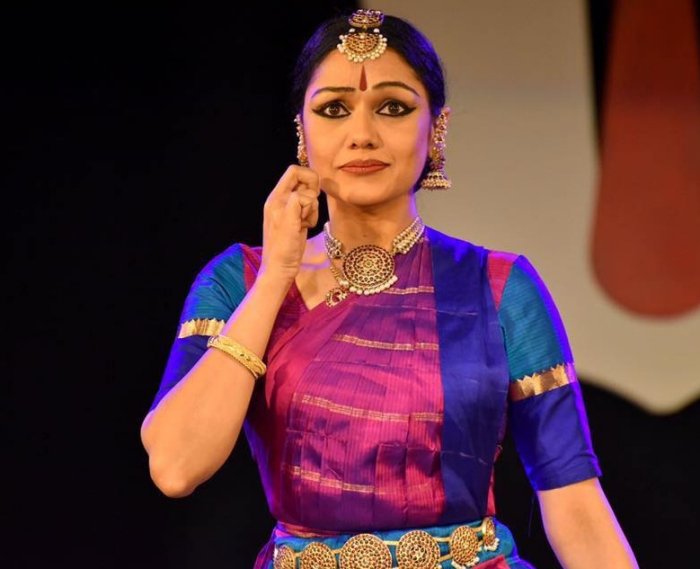 Rama Vaidyanathan Bharatanatyam's global star Rama Vaidyanathan began her solo MOVING BOUNDARIES in a single pathway of light, her feet stamping the first "etude" of the form. Rama has attempted to explore new ways of moving with her arms and feet, using the metaphor of boundaries as a marker to contain and also to burst out of. Straightforward camera work with cuts and less of dissolves initially made me feel like I was watching a recording of a live performance. While the pieces flowed musically into each other, it was in the 3rd piece, the esoteric TIRUMANTARAM (2nd CE ode to Siva) and the emotional score (gorgeously composed and sung by Sudha Raghuraman in Raga Mayamalavagowla) that Rama truly came alive. Repeated words BHOOTANDA-PEYTANDA bored into the pores of the dancer-devotee. As the musical elaborations cascaded, like a chocolate fountain, Rama's pliant body became a vessel to absorb and radiate the syllables and silences of the powerful words. In moving less, Rama conveyed so much more. In the dance about KITES floating above divisions and lines - geographical and symbolic - Rama used straightforward imagery while looking to the skies. How I wished that camera person (dance photographer Innee Singh) could have shot this piece, at least partially, from above. Rama's upward turned face would have been more impactful as an earth bound body yearning to sprout wings and take flight. MOVING BOUNDARIES was ample evidence that Rama has arrived at a place of confidence that will push her to take more risks and charter new courses for Bharatanatyam. Her movement quality has shifted into a quality of quiet control that is perhaps the effect of this prolonged quarantine.  Aditi Mangaldas Aditi Mangaldas has a distinct visual approach to her performances with lighting and set design becoming an integral part of her presentations. In LOST, Aditi opened with a beautiful set of free hanging art frames that swung and swayed as she searched and probed in darkness and half light - looking for a path or a direction to break free from. Aditi lunged, reached, ducked and spun within the empty frames to persist in the metaphor of a voyager lost in the seas looking for the shore. Shubha Mudgal's sonorous voice was a hypnotic sound bed for this first dance which ended with Aditi dissolving into the darkness. The imaginative camera work, spinning 360 degrees around the flailing body of the dancer, mirrored the sense of desperation and despair. It was a stunning opening piece that showed Aditi's command over technique and theme. "How many ways can we show a bird?" once asked Guru Kumudini Lakhia. She was speaking at the SNA conference in Kolkata many years ago. I wish her student Aditi had referred to this line when choreographing her second piece on the deer. How many ways can you show a deer? Just by holding the gesture forever and ever? How about the body quivering in anticipation of a threatening sound? The feet poised to flee? Whatever the choices, Aditi did not reach for any of these. Instead, she dragged a metaphor beyond its usefulness and, in spite of a reflective floor and a mirrored drape, looked heavy and awkward with an unflattering costume for her tiny frame. For someone as experienced and skilful as Aditi, it was a surprising let down for this viewer.  Methil Devika I had great expectations for Methil Devika - because she was representing a normally ignored classical style like Mohiniattam and also because she is an extraordinary abhinaya artiste. I was let down on both counts. The linear narrative of AHALYA from Valmiki's Ramayana, the unflattering costume, wrong camera angles and jarring cuts that focused on the heavily made up eyes and red stained fingers diluted Devika's phenomenal potential. The linear storyline did not make any significant departures to the Ahalya myth or fully utilise the potential of the digital medium. In the few moments that the camera zoomed into Devika's face, one could see the expressive visage in full splendour. I know that this emerging artiste was recovering from a bad bout of Covid and is also not yet in the same global league as the other three dancers who were featured in ANVESANA. I congratulate curator Lata Pada for including Methil Devika in the festival and look forward to seeing her in more presentations in the digital realm while taking the profile of Mohiniattam further. From all four artistes I wished for a short movement solo in an isolated place within their homes. Without costume, makeup or music... perhaps to the sound track of their own voice - even their breath - questioning the isolation, debating the value of dancing during the lockdown - a performance art solo that would peel off the layers of mysticism and grandeur that accompanies their image. The imperfection and the vulnerability of being famous but also stuck in a bubble of doubt and solitude. This kind of reflection did not emerge from any of the four pieces. But, each artiste DID seek to develop the arc of their art AND attempt to create a fresh aesthetic through the lens of the camera. I asked myself the question, "COULD THESE PERFORMANCES BE SEEN ON STAGE IN THE EXACT FORM THAT THEY WERE SHOWN ON THE DIGITAL SCREEN?" Except for Aditi's first solo in LOST, where the camera whirled around her, the rest of the dancers can replicate this performance on stage without missing a beat. So then, is this a performance captured by the camera or can it also become a DANCE FOR CAMERA project? These are two different areas but I yearn to see Indian classical dance experiment more with the digital format without losing the rigour discipline that the forms contain. #GODDESSES IN A DANCE CELEBRATION Dance enthusiast, curator, founder and cheerleader Rajika Puri continues her unflagging support and presentation of the annual DANCING FOR THE GODS festival. Produced by WORLD MUSIC INSTITUTE in New York, last year's festival was cancelled and this year's event was, expectedly, online. On the two day event were four artistes - 2 from the New York area and two from India. I was delighted to be introduced to the feisty and bold Jin Won from New Jersey in Kathak. Precise, sharp and graceful, Jin chose several images and backdrops to create her dance film titled WILLOW. Emerging like a spirit from an ancient tree, she drooped and swayed, then straightened and shifted - arms gently moving in the familiar shapes of Kathak. While some of the editing and sharp flashes of negative black and white images were jarring, I enjoyed the film overall for its boldness and reach. Sonali Skandan has been curator, producer and performer throughout this pandemic. Her JIVA ARTS has been at the forefront of creating online digital commissions for various US based dancers. In this offering for DANCING FOR THE GODS, Sonali titled her performance THE SUN UNTO A DAY, exploring the heat, warmth and life giving force of the solar rays. The juxtaposition of her slim, almost wraith-like frame against the cyclorama showed vulnerability and hope. Using Bharatanatyam as her foundation, Sonali super imposed visuals of another film where her frame was silhouetted against the sun, a warm orb in the horizon across the waters. This was a smart way of using film to amplify the visual impact of her choreographic motifs. 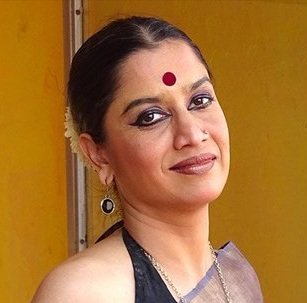 Surupa Sen All eyes were on Surupa Sen, the driving force and the current head of NRITYAGRAM. Focusing more on choreography and direction rather than her own solo work for the past 20 years, Surupa was only seen on stage with Bijayini and almost never alone. THIS was the perfect opportunity to see a former Bharatanatyam dancer step into her deserved Odissi spotlight. Surupa presented three items, one of an earlier recorded stage event and two more that were recorded within the Nrityagram studios. It was in the second and third that she really showed her artistry. The sari, tied casually like in a practice session (only a bit more carefully!), the measured and strategically placed foot and torso mapping the space, the face made up just enough so as to also show her pores glistening with sweat and the hint of skin below her "choli" - these were strong visual markers as I watched her on my IPad. Tender, graceful, forceful, strong, pliant yet statuesque - Surupa was totally convincing in her surrender to Krishna, Surupa shimmered and glistened. The three songs were firm favourites of the Odissi repertoire - Geeta Govinda - familiar to musicians and dancers. Watching Surupa Sen made me think that now Odissi has three superb performers. Sujata Mohapatra, Bijayini Satpathy and Surupa Sen. It is Odissi's gain and perhaps also a fresh chapter in the remarkable NRITYAGRAM story. A firm favourite of curator Rajika Puri and beloved of New York fans, Rama Vaidyanathan was featured in this four member roster. Having just watched her MOVING BOUNDARIES for the Canadian festival, I was pleased at her choice of three ABHINAYA items. Three heroines in various phases of emotions- VEXED, ARROGANT, ANXIOUS. Dancing on a balcony with the historic Humayun's tomb in the background, Rama delivered her three pieces with the competence of a mature artiste. It was refreshing for me to see her without the familiar flash and dash, her flourishes, her quicksilver movements and jumps. Here was a more sedate and controlled artiste enjoying the poetry and responding to the gorgeous flute (G Raghuraman) and the imaginative lyrics across three languages. What viewers must be reminded of is that all the India based artistes have to be commended for completing their assignments under the most extreme duress. Covid hit some of the dancers, some of the tech crew and editing the final version must have been like a nail biting finish for all the projects. For more detailed descriptions of the dance pieces and associated credits, please read the reviews from various voices in this newsletter under MORE ON THE ARTS. # BROWN BODIES- WHITE GAZE  Just as I had finished watching all the performances, I read the New York Times review of the festival by dance critic Brian Seibert. I was appalled at how carelessly and rudely he dismissed Jin Won and Sonali Skandan with remarks like "reminiscent of a cheap horror film" and "exposes her imperfection". He began the review titled THE CHARMS AND PITFALLS OF DANCING THE GODS ON CAMERA by referring to Rama Vaidyanathan as "a masterful artist" but continued to express his distaste at her first person explanations and her "too much eye rolling, too much attitude." Well, Mr. Seibert- are you unaccustomed to the South Asian protagonist in sacred poetry being anyone other than submissive, adoring, yielding, soft and pliable? Feisty women who tick off their men and say, "Enough of your nonsense, mister. Here is the door!" Is this something women of colour are not expected to utter? Adoring- yes. Arrogant- NO? Abhinaya IS a stylised methodology of mimetic communication where the gestures, expressions and body postures coalesce to convey the word and the inner meaning of the protagonist. It is meant to be theatrical and developed for an audience sitting at a certain distance. In Rama's performance, the camera did not come into intense close ups, neither did Rama overdo her makeup when the camera zeroed in on her face and upper body in the third piece. If Mr. Seibert wanted his discomfort to be appeased by watching "full out dancing", Rama could have easily included one of her stellar, stamina-busting clips from any stage performance - something that Surupa did. What did Mr. Seibert expect from three lyrical pieces that were the curator's brief to the dancer? I wonder - was it a critique of Rama's performance or of the camera's FRAMING of her presentation? Did Surupa Sen fulfill the critic's idea of "emotional nakedness" and sensual appeal that he gushed over? Rama's 3 pieces were of varying tones and certainly not of the submissive tenderness of a devotee that the Western eye is used to from an Indian classical dancer. The praise for Surupa, the disappointment at Rama's performance and the brushing aside of Jin and Sonali's efforts elicited mixed feelings for me. Irritation being at the forefront. While it is never a good idea to take on critics, the tone of this review in the New York Times about a reputed festival deserves a fitting reply and a tutorial about "How to read Abhinaya in Indian dance". And that Indian dance traditions do not always require stamina testing movements. On the flip side, does this also mean that Indian dance has finally "arrived" onto mainstream media? That the writer is not intimidated with the religiosity and the sacred tones of the classical form and can write freely without hesitation? #KALAKSHETRA KALA-MITY  How does an institution survive if the onslaught of indifference and negligence continue to shadow it? For 85 years, Kalakshetra has survived the various vagaries of politics and changing Government priorities. Now a national institution of eminence, this Chennai based Bharatanatyam academy is welcoming a new governing board WITH NO BHARATANATYAM DANCER ON THE LIST. How does such a blunder happen? What is the excuse for this glaring oversight? How does the government's culture wing make these ad hoc decisions about a national institution of eminence known predominantly for BHARATANATYAM without including a name that is either from the Alumni or another eminent artiste from the same discipline? I would like to see how other institutions like Kathak Kendra, Koodiyattam Kendra and Jawaharlal Nehru Manipur Academy (also under the national government radar) welcome names that are not from their discipline or their ethos. There would be such a hue and cry about native intelligence, cultural connections etc. So then why this callous attitude towards such an important institution like KALAKSHETRA? Having eminent Carnatic music names like Sudha Raghunathan is welcome but WHAT ABOUT INCLUDING AT LEAST ONE BHARATANATYAM DANCER? In its bid to include new and younger names, why choose a 27 year old Odissi dancer from Puducherry who may be a talented artiste but is wet behind the ears when assuming such an important position. Some of the names are NOT of national eminence. So what then is the criteria? How many of the newly appointed members even know how to read a government document? How many actually know the historic relevance of KALAKSHETRA and its enormous impact on the cultural personality of modern India? How can they contribute and guide the director to implement her vision? Why this blatant indifference to such a historic institution with a global influence in standards and style? The new governing board is made up of 3 Carnatic musicians 1 Odissi dancer 2 Kuchupidi artistes 1 Puppeteer 1 Folk Singer 1 Hindustani musician 1 Kathakali artiste and advocate 1 Sanskrit scholar 1 Architect The Academic council is made up of 1 Bharatanatyam teacher (student of the Narasimhacharis) I Kathak scholar I Music scholar To add to this irony, one of the nominated board members PASUMARTHY KESAVA PRASAD has recently passed away due to Covid complications. This creates a vacancy on the board which I hope the new chairman Mr. S RAMADORAI, formerly from TCS (Tata Consultancy Services which sponsors the New York Marathon) will take note and rectify immediately. Mr. Ramadorai's position of eminence in the corridors of Prime Minister Modi's inner circle, and his experience in international corporate affairs should augur well for KALAKSHETRA. He alone can ensure that the replacement is an appropriate choice. KALAKSHETRA needs an alumni member or at least a Bharatanatyam dancer of eminence in Chennai to fill this vacancy. Is there no single name in the international galaxy of star artistes that have emerged from under the banyan tree to take their place on the board? Really? Nobody? 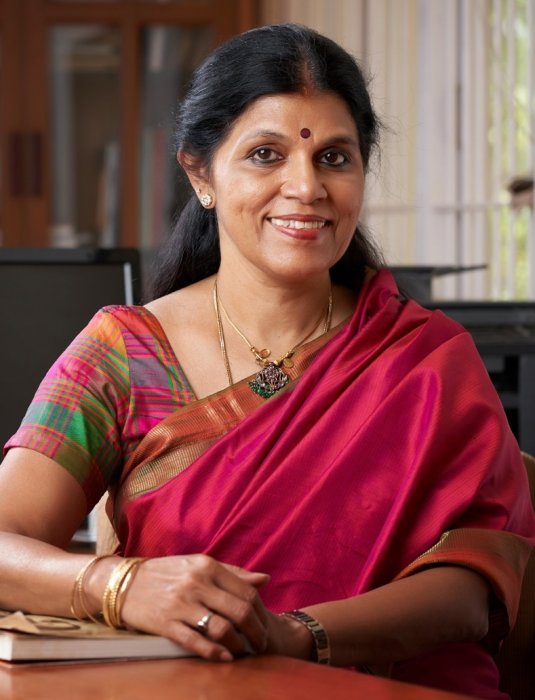 Revathi Ramachandran Meanwhile, the director Revathi Ramachandran will have to continue to steer the boat with her calm demeanor and try to push forward many long pending issues that have been put on the back burner for the lack of a board meeting being convened. I wonder what she is thinking of this new set of appointees? Revathi has proved to be a good administrator with cordial relationship with her staff and students. The pandemic has revealed the immense possibilities that Kalakshetra can exploit, given its fascinating history and its treasure trove of archives in the areas of costume, textiles, education and the environment. We await the day when my Alma Mater embraces the digital millennium alongside its core values. #DELAYED AND DENIED And on the matter of delinquent cultural policy, I would like to raise the important issue of the annual SNA awards. With no new committee or chairperson appointed for over a year, the 2018 awardees are still waiting for their award cash compensation. While the actual ceremony may not be held until 2022, what is stopping the SNA from sending the cash portion of the award to the selected artistes? After all, some senior artistes would greatly benefit from the cash portion of the national honour. So what is holding up the payout? #GROWING PRIDE, BOLDER IDENTIIES June is PRIDE MONTH and it is time for all of us to brush up and be brought up to speed with the politically correct terminology while addressing people. Now, when I attend webinars, there is a line below the panelist's name that says HE/HIM or SHE/HER or THEY. This is an indication of how each person would like to be addressed. My generation can often trip up but we must learn and not resist the changing social order. Watch for talks and shows that focus on artistes from South Asia who are embracing change and a bolder expression of their identities. #OF DREAMS AND DESIRE 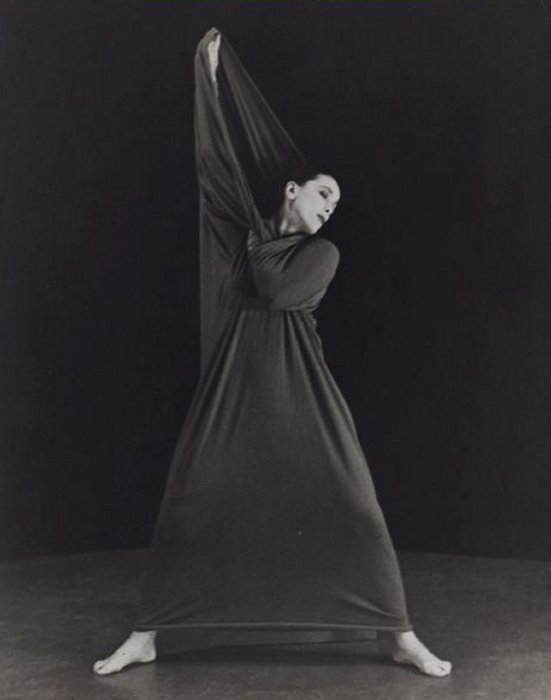 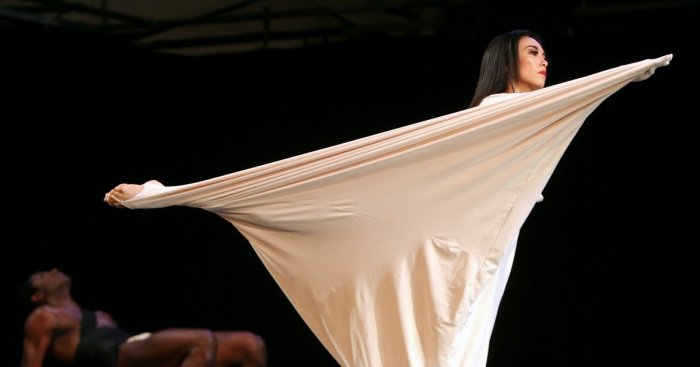 In the monotony of my days, broken by a never ending stream of webinars and Zoom talks, to which I had agreed in some moment of madness, I chanced upon the new NETFLIX limited series on American fashion designer HALSTON. A rage in the 1970s and 1980s, Halston was a permanent fixture at Studio 54, the number one nightclub in the USA and in the very same building as my television studio. On the nights that we would be working late, finishing up an edit before the broadcast deadline, we could hear the pounding sounds from below as every single famous name danced and snorted drugs in free abandon. The fifth episode of the series focuses on modern dance diva Martha Graham and her love of Halston's designs for her party wardrobe and her productions. Stricken with arthritis, Martha Graham asks Halston to "be my hands' and to sculpt her dancers in the Greek tragedies that she became so famous for. Watching actor Ewan McGregor stretching an Ace bandage across his hands and talking about "becoming the membrane of desire and imagination" - then converting his ideas into swathes and swirls of Lycra fabric for PERSEPHONE was to watch two artistes who respected, trusted and adored each other's art. Do try to catch the series if only to watch how brilliance can rise and fall if the temperament does not match the talent. # BOXED- ONE YEAR LATER We are reaching out to several BOXED dancers for a June weekend series called BOXED-One Year Later. Catching up with their activities since the successful digital series premiered in May 2020 and learning about how the past 12 months has affected their lives. Many have fallen ill with Covid and several dancers have discovered other passions besides dance. Our own editor Surya Rao is still struggling with his recovery, unable to concentrate or work for extended periods that he was used to. Our Line Producer Masoom Parmar was also affected. Our editor Lalitha Venkat is house bound with her neighbours affected. My own street has one sick person for every house or apartment. Still, we have not paused to fulfill our commitments. Through it all we have delivered new shows, talks and this newsletter on time - every month. For 21 years. To my brave team- Thank you. Let's keep the momentum going. As and when we do emerge from this pandemic, all indications point to a braver and bolder attitude amongst us. Trends point to the fact that we will travel more, spend more and be more adventurous as we seek to tick off items from our "Bucket List". So how does this filter down to the Live Arts community worldwide? What is the changing landscape of Dance, Theatre, Music, Puppetry and all forms of creative expressions that demand a performer and her/his audience seated in the same physical space and sharing in the MOMENT? What kind of art will emerge from 18 months of a global shift in lifestyle and attitudes? We will step out - eventually We will be able to travel without fear - eventually We will be able to perform on stage - eventually We will be able to hug our friends and loved ones - eventually We will be able to smile showing our teeth - eventually We will be able to sit shoulder to shoulder on planes, trains and automobiles - eventually And Inside a darkened film theatre or an auditorium - eventually Meanwhile, Stay safe. Stay masked. Stay alive Dr. Anita R Ratnam Chennai (and taking walks with my dogs on the lanes near home) PS: Not for a moment have I forgotten the grief and loss that so many homes are facing. The #METOO moment has surfaced with sexual predators appearing in prestigious schools during online teaching. Historic monuments are facing destruction and the caste wars are intensifying. We are not ostriches with our heads in the sands, thinking of only dancing and singing. I have chosen to focus on dance, performance and the thoughts that accompany so many digital premieres that have been launched in May. The precarious threat to life and the brutal second wave is still upon us. I am so afraid to open my Facebook page or when the phone pings a message. The heart is heavy - with dread. Thank you to all those generous artistes in the diaspora who have organised events and festivals to raise money for COVID relief in India. Tamilnadu has run out of vaccines as I write this. Pray for us. Pray for India. She needs your faith and good wishes. Twitter: @aratnam Facebook: Anita R Ratnam Instagram: @anitaratnam Blog: THE A LIST / anita-ratnam.blogspot.in Comments * Kalakshetra's newly appointed governing body: I wholeheartedly endorse the views expressed by Dr. Anita Ratnam and add that the Ministry of Culture who makes the decision should apply some rationale in constituting a governing body of a nationally important institution like Kalakshetra. While a person of Dr.Ramadurai's calibre is chairing the Board, the board members should also measure up to his seniority and status to have dignity and decorum to such august governing Board members. For the kind attention of Kalakshetra Chairman, Director and others interested in the institution. See the list published in Narthaki Online by Dr. Anita Ratnam. These members may be good in their respective fields and probably they will perform in the Kalakshetra theatre. But please note that none of them will be in a position to help the institution with artistic contribution and enhance the funding position or generate funds for the institution. At least a few philanthropists and heads of charitable funding bodies and heads of commercial houses who have interest in art & culture should be included in the Board. My humble suggestion… - V.P. Dhananjayan (senior most alumni of Kalakshetra) (June 5, 2021) Post your comments |